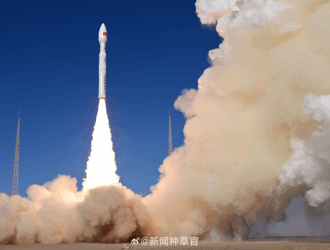
Human exploration of Mars has been a long-term goal of NASA and the Nation for the past 5 decades. In 2015, the
Agency announced its Journey to Mars framework for deep space exploration with manned missions to Mars beginning
in the 2030s. In addition to the technical and health-related challenges of deep space missions, such a multi-decadal
venture will be very expensive, with NASA’s budget projections for human exploration to Mars exceeding $210 billion
by 2033.
A vital part of achieving its long-term human exploration goals is the successful development of NASA’s new spaceflight
system – the heavy-lift Space Launch System (SLS) rocket, the Orion Multi-Purpose Crew Vehicle (Orion) capsule, and the
ground processing and launch facilities (Ground Systems Development and Operations or GSDO) needed to launch the
rocket and capsule for cislunar and deep space exploration. NASA has invested more than $15 billion in these three
programs since 2012, and its near-term goals include a first uncrewed flight of the integrated SLS/Orion systems –
Exploration Mission-1 (EM-1) – no later than November 2018 followed by a crewed flight – Exploration Mission-2 (EM-2)
– as early as 2021.
1
However, NASA’s plans beyond these two missions are less clear, with several options in early
development, including robotic and crewed missions to an asteroid in the early to mid-2020s to test technologies and
capabilities that would be needed for a mission to Mars. Moreover, these scenarios were developed during the previous
administration, and the Agency’s new leadership is seeking to modify those plans with the President’s fiscal year 2018
budget request proposing cancellation of the Asteroid Redirect Mission and the Agency issuing a document in March
2017 that modifies and fleshes out some of its plans.
In light of the enormous costs and challenges and the critical decisions that must be made in the next several years, we
examined NASA’s plans for human exploration beyond low Earth orbit in the near-term, mid-term, and long-term.
Specifically, we assessed the Agency’s (1) plans for and progress towards its first flights of the integrated SLS/Orion
systems in the next 2 to 5 years, (2) challenges in executing a sustainable and affordable plan to send a crewed mission
to Mars in the 2030s or 2040s, and (3) strategies to help reduce the costs of its human exploration efforts. To complete
this work, we analyzed cost data, interviewed Agency officials, conducted on-site inspections, and reviewed planning
documents, feasibility studies, and other relevant program documentation.



